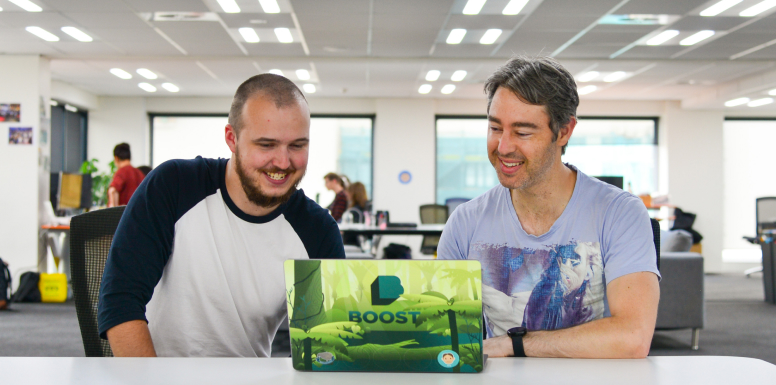
Building your web application in Ruby on Rails helps ensure your project delivers the impact promised. Find out how, and get tips on choosing the Ruby on Rails development company that’s right for you. You’ll get a list of Wellington Ruby on Rails development companies and guidance on why and when you should use Rails, and when you shouldn’t.
Boost came to grips with our project’s requirements and quickly and effectively developed a solution that met our needs.

Ruby on Rails is a framework for web application development. It’s written in Ruby, a programming language designed to make development productive and fun.
Released in 2004, it’s since been used on millions of sites including the likes of Airbnb, GitHub, Shopify and Basecamp.
Here at Boost we specifically chose Ruby on Rails for building transactional web applications because it gives our clients the best balance of rapid development and robust engineering. Why’s that, you say? I’m glad you asked.
You get working software quickly. You can then test this with your customers, tweak as required, and repeat the process. Because it lets you deliver value early and often, Ruby on Rails is ideal for Agile development.
Ruby on Rails makes this rapid development possible because it simplifies and automates repetitive tasks, favours convention over configuration, and can call on many thousands of ready-to-use code modules known as gems.
Because it’s a mature, open-source platform with a culture of quality, Ruby on Rails is stable, secure and well-maintained.
On top of that, Ruby on Rails uses a model–view–controller framework which gives you a solid but flexible base on which to build your app. This base is set up to accommodate future development and increasing complexity.
With Ruby on Rails, it’s easy to maintain your application.
The large Rails community means you’re not locked into using a single Ruby on Rails development company. Plus, it’s easy for developers to pick up new projects. That’s because Ruby on Rails is largely self-documenting — developers can easily understand what someone else’s code does.
Ruby on Rails isn’t the way to go if you:
Boost aren’t the only Ruby on Rails development agency in Wellington. Here’s a list of options. (If you want your company added, just email us.)
This list gives you a starting point for finding the Ruby on Rails development company that’s right for you. Get in touch, have a chat and see who you feel will give the best results. Who is most in tune with the outcomes you want to achieve and who would you most enjoy working with?
Are you a software engineer looking for Wellington Ruby on Rails developer jobs? Check our careers page to see if we’re hiring.
Whether you’re based in Wellington or elsewhere in New Zealand, we reckon Boost is hard to go past. Here’s why.
Ruby on Rails is ideal for Agile development, but not all Agile development companies are created equal. Boost are the Wellington Agile development experts. We train other companies in Agile and we’ve been Agile ourselves for 12 years.
This means that you actually get to realise the speed benefits of developing in Ruby on Rails.
Practice makes perfect, and Boost’s developers have had oodles of practice.
We started using Ruby on Rails in 2006, and our team of more than a dozen developers have over 100 Rails applications under their belts.
You get high quality at high speed. We use test-driven development, peer programming and usability testing to ensure our designs and code are secure, elegant, easy-to-use and easy-to-maintain.
We make improvements to existing gems, we share our own gems, and we sponsor and attend conferences like Kiwi Ruby in Wellington. Because our developers are an active part of the Ruby on Rails community, they can make best use of the latest developments in delivering your project.
You get to achieve the outcomes you want, and have fun doing it. Our purpose as a company is to help others have a positive and lasting impact. Because we only work on projects we can get excited about, we bring enthusiasm and energy to the work we do.
Ruby on Rails is one tool in our toolkit, and we only use it when it’s the most appropriate option.
They ensure you get a good-looking product that allows you to test your idea before spending unnecessary money on bells and whistles that may never get used.


